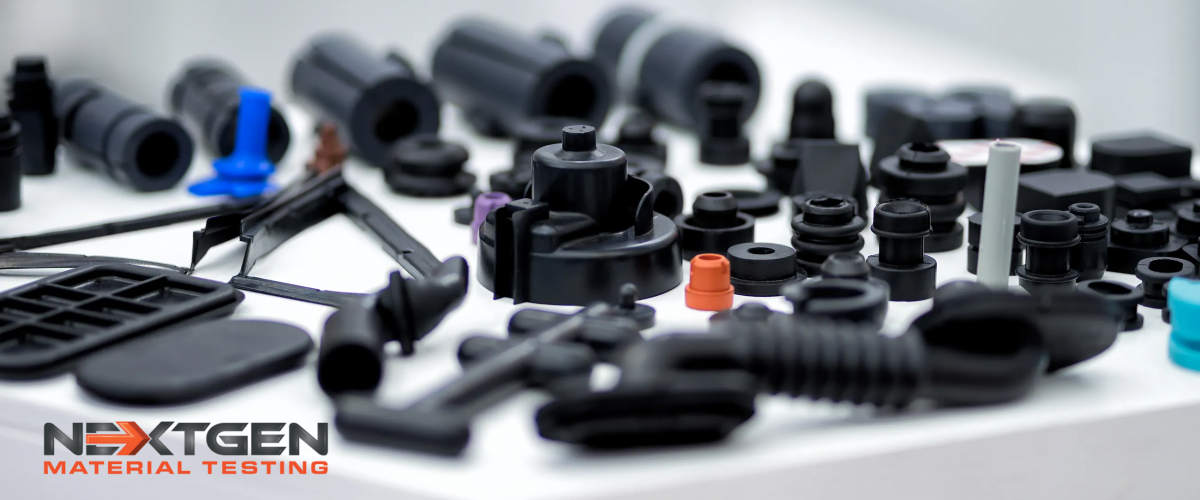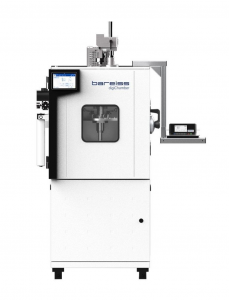 Knowing the physical properties of materials and understanding how they change under the influence of external factors is crucial for the design, specification, and quality control of manufactured products. Rubber holds a special place in materials science – not only because it is widely used and has unique mechanical properties, but also because special test procedures are used to measure almost all the characteristics of these materials. The importance of rubber hardness testing for industry and research is evidenced by the large number of national and international standards that have been developed in this area.
Knowing the physical properties of materials and understanding how they change under the influence of external factors is crucial for the design, specification, and quality control of manufactured products. Rubber holds a special place in materials science – not only because it is widely used and has unique mechanical properties, but also because special test procedures are used to measure almost all the characteristics of these materials. The importance of rubber hardness testing for industry and research is evidenced by the large number of national and international standards that have been developed in this area.
The purpose of this blog is to draw readers’ attention to the most advanced temperature controlled hardness tester DigiChamber, designed specifically for analyzing rubber hardness in Shore A or IRHD N scales under temperature conditions that include extreme cooling and heating from -40° to 180°C (-40° to 356°F).
Accordingly, we will get acquainted with the properties of rubber as our tested material, learn about hardness and how it is measured, and how temperature affects it. Finally, we’ll take a look at the controlled hardness tester that NextGen supplies to the North American market.
Why is Rubber a Unique Material?
Unique mechanical properties set rubber apart from all other construction materials. The historical aspect of rubber’s emergence in our everyday life is also very interesting. Let’s consider these interrelated topics in sequence.
Rubber is indeed a unique material that requires special standards and testing equipment. The main characteristics are described below.
– The elasticity of rubber is manifested in the fact that it can deform elastically and absorb energy when a load or strain is applied and return to its original shape after the load is removed. This property of rubber makes it effective for shock and vibration absorption, which provides comfort and safety in applications ranging from shoes to car tires to airplane landing gear. This also makes it useful for many applications such as seals, cushioning, and rubber springs.
– Flexibility: Rubber can adapt well to the shape of different surfaces. This property makes it useful for sealing and creating airtight joints in a variety of industrial and domestic applications.
– Durability: Rubber can withstand external loads and deformations without damage. This ensures a long service life of elements made of this material.
– Chemical resistance to various substances, such as solvents, oils, acids, etc., allows the use of rubber products in the presence of aggressive environments.
– Temperature resistance: Rubber can retain its properties over a wide range of temperatures, which allows it to be used in various conditions, both at high and low temperatures.
– Durability: Rubber has high wear resistance and can withstand a large number of deformation cycles without losing its mechanical properties. This makes rubber an excellent material for the production of tires, conveyor belts, sports equipment, footwear, bumpers, shock absorbers and other parts that are subject to intense impact and wear.
– Water resistance also inherent in rubber. It forms a barrier to moisture, liquids and gases. This, in combination with mechanical properties and chemical resistance, makes rubber an ideal material for sealing various objects and devices – to protect against the penetration of water, moisture, gases, or to prevent leakage of liquids and gases, to maintain high or low pressure in the sealed volume.
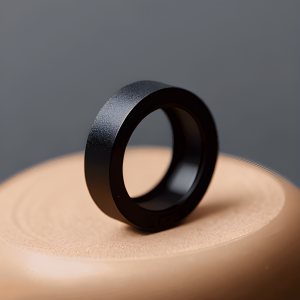
The unique physical properties of rubber relate to its strain and deformation, such as Payne and Mullins effects, which are often described as hyperelastic properties. This material also exhibits a hysteresis effect.
Because rubber has unique mechanical properties, special standards and equipment are developed for testing it. For example, tensile, compression, cross-linking or tensile tests are used to determine rubber’s strength, elasticity and other parameters. Special devices are being developed to test rubber under different conditions, such as different temperatures, humidity or corrosive environments to determine its resistance. This also relates to temperature controlled hardness testers for examining behavior of rubber under extreme conditions. These special standards and equipment help manufacturers and users of rubber materials to ensure the quality, safety and reliability of products, and to find new applications for this material.
Rubber is an amazing representative of natural and synthetic materials at the same time. How does it possible? The answer to this question can be found in the history of rubber in our everyday life.
History of Rubber: Search for Use
During his expeditions to America, Columbus witnessed the use of a white fluid from the Hevea brasiliensis tree by local tribes for various purposes. This was a natural rubber used to make waterproof products and arrows. Columbus took samples of rubber, i.e. introduced it to Europeans.
At that time, the material did not immediately find distribution in Europe. It was only in 1770 that the British chemist Joseph Priestley first found a use for it, discovering that rubber could erase graphite pencil writing. In 1791, the English manufacturer Samuel Peal patented a way to make clothes waterproof by treating them with a solution of rubber in turpentine. In 1834, the German Friedrich Ludersdorf and the American Nathaniel Hazward discovered that adding sulfur to rubber reduced its stickiness. These were examples of the rubber vulcanization process. However, the inventor of vulcanization is still considered to be the American Charles Goodyear, who received a patent for the vulcanization method. This is a process of chemical modification of natural rubber that improves its mechanical properties, making it stronger, more elastic and suitable for industrial use in various industries. This eventually gave rise to the rubber fever.
Due to increased demand in rubber in the late nineteenth and early twentieth centuries, huge rubber plantations began to emerge and develop in South America, growing these plants monoculturally. Later, the center of rubber growing moved to Indonesia and Ceylon.
Meanwhile, in the United States of America, a patent for the production of rubber gum was obtained in 1869 by William F. Semple from Ohio, but it did not go further. Rubber gum was first produced by Thomas Adams, a New Yorker. The first batch of goods scattered like a flock of sparrows! Eventually, he managed to create the Black Jack gum production that we know today.
The emergence of a chemical process for the production of synthetic rubber in the 1920s put an end to the sweet life of rubber planters. Instead, it provided new opportunities for the production of rubber materials using different chemical constituents and varying properties. Synthetic rubber has become the basis for the production of a wide range of rubber products.
The rubber industry continues to develop actively today. Rubber is used in many industries, including automotive, tire, medical, sports, household and other. In addition, research is ongoing to develop new types of rubber, improve its properties and reduce its environmental impact. This, in turn, necessitates the development of testing equipment for rubber, among which hardness is one of the most important characteristics.
Measuring Rubber Hardness with a Hardness Tester
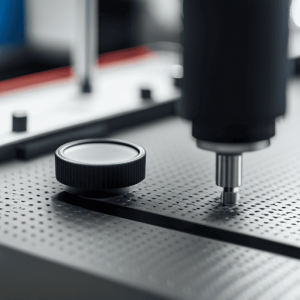 The most common method for measuring rubber hardness is to use an instrument known as a hardness tester, hardness gauge, or durometer. They measure the depth of an indentation in a material created by a given force using a standardized indenter. This depth depends on the hardness of the material, its viscoelastic properties, the shape of the indenter, and the duration of the test. Thus, the indentation depth allows you to determine the hardness of the material.
The most common method for measuring rubber hardness is to use an instrument known as a hardness tester, hardness gauge, or durometer. They measure the depth of an indentation in a material created by a given force using a standardized indenter. This depth depends on the hardness of the material, its viscoelastic properties, the shape of the indenter, and the duration of the test. Thus, the indentation depth allows you to determine the hardness of the material.
Several different hardness scales are used for this. The most common are the Shore and IRHD hardness scales. Both scales measure hardness in the range of 0 to 100 degrees. The difference between the measurements is that the Shore scales are linear, based on the deflection of the rubber, while the IRHD is a non-linear scale related to the elastic modulus of the material.
After performing measurements with a hardness tester, the results can be expressed as numerical values on the appropriate hardness scale. These values can be used to compare the hardness of different rubber samples or to control the quality of products.
Portable and Fixed Hardness Tester Systems
Portable and stationary hardness testers have some differences in their characteristics and applications. Of course, the main advantage of portable hardness testers is their compact form. It allows them to be easily carried from one place to another. This is especially useful for measuring hardness on-site, on production lines, or in environments where a stationary device cannot be used. A portable hardness tester is usually easier to use and do not require complicated setup or calibration. They may have a display to show results directly at the measurement site. Stationary hardness testers can be more complex to handle, with sample preparation and setup requirements.
Instead, stationary hardness testers often have a wider range of applications and are capable of measuring hardness from low to high values. They can be more accurate and stable measuring devices because they are usually fixed to a specific stand, which ensures a more precise geometric positioning of the intensifier and sample. In addition, they are equipped with more precise sensors and measurement systems, which generally allow for more accurate results.
A stationary hardness tester can be equipped with an automatic sample feeding system, which allows for fast and efficient testing. It also has software for automated control and result processing, which increases productivity and reduces test time, ensuring that the results are not influenced by the operator and greater measurement objectivity.
The temperature dependence of rubber hardness is most effectively studied using a stationary temperature controlled hardness tester equipped with a thermostatic chamber, such as the DigiChamber. In such chambers, the sample is conditioned prior to measurement, and the intensifier and all hardness testing equipment are located there, thus ensuring reliable results.
Of course, stationary hardness testers come with a higher price tag than portable options, but these advantages can justify the cost, especially if you need high-quality and accurate measurements of material hardness.
If you are interested in NextGen’s portable hardness testers, we recommend that you pay attention to:
– UH200 non-destructive Ultrasonic Hardness Tester;
– LeebGen3000 – Leeb Portable Rebound Tester.
Temperature Effect on Rubber Hardness
Rubber hardness generally decreases with increasing temperature. Rubber is a polymeric material, and as the temperature increases, the polymer chains become more mobile. An increase in temperature leads to a decrease in rubber viscosity and elasticity and makes the material softer.
Some rubbers have phase transitions at certain temperatures, such as freezing or softening. During these transitions, the hardness of the rubber can change abruptly due to structural changes in the material. At certain high temperatures, rubber molecules can break down, which can lead to a decrease in hardness. As the temperature decreases, rubber tends to harden, while its brittleness increases.
It is important to keep in mind that different types of rubber may have different thermoelastic profiles and react differently to temperature changes. Also, the hardness of the rubber can depend on the speed of heating and cooling, and the duration of exposure to temperature factors. Therefore, to achieve reproducible and reliable results, it is best to use an automatic stationary temperature controlled hardness tester with software. And NextGen’s DigiChamber is the perfect solution for it.
It is important to consider temperature conditions when designing and using rubber for specific applications, as the hardness of rubber can change accordingly.
Hardness Measurement at Different Temperatures
A hardness test is defined as the ability of a material to resist deformation by a harder body known as an indenter, which is usually diamond, ceramic or tungsten carbide in the most common hardness tests. During a hardness test, the indenter is pressed into or pressed against the surface under test in a prescribed and controlled manner, resulting in plastic (permanent) deformation (indentation) of the surface, which provides a measure of hardness. Therefore, hardness testing is highly dependent on the interaction of the indenter with the metal surface. However, this interaction changes with temperature due to changes in the metal.
The ASTM standard for UCI (A1038) does not specify a temperature range and does not require temperature correction. It only warns that the temperature of the sample can affect the test results. This means that the ASTM A1038 standard can be improved with additional limits or temperature information. However, it is crucial for rubber manufacturers to understand how the product material will behave at different temperatures to ensure that they can guarantee the quality of their products under the widest range of conditions.
Using rubber hardness at different temperatures, it is possible to characterize a material faster and cheaper than using other methods such as tensile, prototype or in-service testing, as several temperatures and exposure times can be tested in one hot or cold hardness test cycles in automatic temperature controlled hardness tester. This makes temperature hardness testing an excellent way to compare multiple materials at different temperatures.
DigiChamber: A User-Friendly Hardness Tester Providing Practical Results
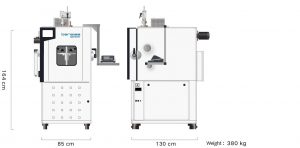 Developed by Bareiss, the digiChamber is the most advanced rubber hardness tester at various temperatures. This automated system is designed to provide accurate data on the ambient and extreme hardness of rubber according to the Shore A or IRHD N scales.
Developed by Bareiss, the digiChamber is the most advanced rubber hardness tester at various temperatures. This automated system is designed to provide accurate data on the ambient and extreme hardness of rubber according to the Shore A or IRHD N scales.
The measurement of rubber hardness at different temperatures is performed by means of thermostatting. The rubber sample is placed in a chamber where the required temperature is set and precisely maintained. This allows for real-time measurement of rubber hardness at specific temperature conditions.
The mechanisms that support the operation of the intensifier and all digiChamber measuring systems are designed to operate reliably in the temperature range from -40° to 180°C (-40° to 356°F). The temperature of 180°C represents the maximum, as it is approximately equal to the melting point of most rubber grades.
As with all NextGen equipment, the digiChamber is designed to provide reliable results in the simplest, most comfortable way possible. For easy monitoring and analysis of results, it features a 7-inch touchscreen monitor and an intuitive, multilingual interface with digiCenter software. This allows the user to easily manage test sequences, criteria, and generate customized test reports. The 25-position automatic sample feeder allows for long measurement sequences to be programmed and continued without operator intervention.
The 200-liter test space provides uniform conditioning of samples and test equipment within the polished stainless steel walled chamber. The refrigeration unit uses air cooling with steplessly variable SIMPAC power control without the use of CFCs.
With the digiChamber, you can simulate rubber hardness at extremely low and high temperatures, which plays a special role in the automotive and tire industry, where rubber parts must withstand extreme temperature fluctuations and rubber hardness is a very important characteristic that affects not only the commercial success of the company, but also the life and health of the users of its products.
If you still have any questions about digiChamber, NextGen representatives will be happy to provide you with professional answers. Contact us today if you are interested in learning more about our line of Rubber Testers.
